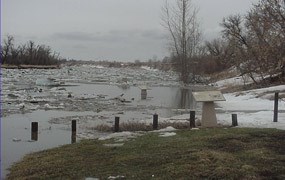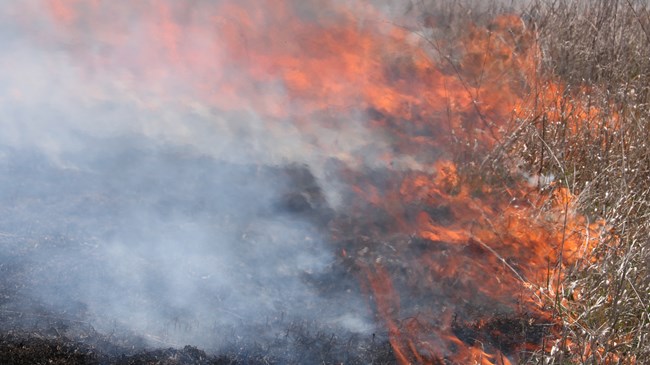
NPS Photo by Rod Skalsky False EcosystemsThe Missouri River is now controlled by the Garrison Dam, which is approximately seven miles north of the park. Since the completion of the dam in the early 1950's, no large scale flooding has occurred in the area. DiseasesFungus and Elm Diseases are also prevalent throughout the forest. Ongoing projects are working to save the forest and to allow future succession the opportunity to occur but many years of neglect and hardship have taken their toll on the existing system. Ice JamsAlthough the Missouri River is unlikely to flood, the Knife River is situated at a precarious location within the park’s borders. The Knife River flows through about three miles of the park and many of the archeological sites are located directly on the banks of this river. 
NPS Staff/Moeykens Nonnative Species and BurnsLeafy Spurge, Canada Thistle, and Smooth Brome are just a few of the non-native species invading the park. In attempts to prevent non-native vegetation from overwhelming the prairie, controlled burns are conducted yearly. |
Last updated: August 18, 2020
